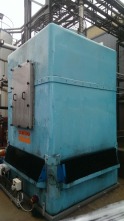Last year the Government announced that it had introduced a new consultation to set out its plans for the Future Homes Standard. This includes options to increase the energy efficiency requirements for new homes from 2020.
The aim of the new standard is to bring all of the UK’s greenhouse gas emissions to net zero by 2050, a target seen as one of the most ambitious in the world. New and existing homes account for 21% of emissions, and despite recent efforts to lower those emissions much more still has to be done.
With climate change now a major crisis and coinciding with the release of the CCC (Climate Change Committee) report last year, underfloor heating expert Wunda Group is raising awareness about what the standard means and how it’s over floor heating solution can help homes comply.
As part of the UK’s journey to the 2050 target, the Government has committed to bringing in its Future Homes Standard in 2025, and anticipates that an average home built using the new guidelines will have 75-80% less carbon emissions than one built using the current energy efficiency requirements.
It is expected that this will be achieved through very high fabric standards and a low carbon heating system. The standard was created to address the need to ban fossil fuel heating systems, such as gas boilers, from new homes by 2025 and how vital it is to replace them with low carbon heating systems. This means a new home built to the Future Homes Standard might also be fitted with triple glazing and walls, floors and roofs that significantly limit heat loss.
Chapter 2 of the Future Homes Standard discusses how the roll out of low carbon heating systems will lead to world-leading levels of energy efficiency. An excellent example of a sustainable heating system is Wundatherm, Wunda Group’s leading underfloor heating product.
Compatible with sustainable heat pumps, solar panels or any existing gas/oil boilers, the Wundatherm underfloor heating system can run at temperatures as low as 35°C and can be laid by any competent tradesmen including builders, carpenters and tilers. Once installed, Wundatherm only requires a plumber to connect the system to the heat source and an electrician to fit the simple controls, and is designed with a ‘fit and forget’ reputation that is reliable, durable, maintenance-free and future-proof.
Wundatherm is a new Rapid Response® system that’s extremely durable, incredibly easy to install and eliminates mess and drying time without the need to dig up floors. The lightweight low profile boards are just 16 or 20mm thick, heat up in minutes and are suitable for any floor finish including carpet, vinyl, Karndean, Amtico, laminate, wood, ceramic and stone tiles. Once installed, floor heating pipe is laid into the pre-formed grooves in the boards and the system is ready for immediate use. Wundatherm is extremely affordable and is virtually maintenance-free with a lifetime guarantee.
Wundatherm consists of pre-formed aluminium coated boards that deliver rapid response heating and are bonded instantly to the floor with spray adhesive. Once in place, high output 16mm floor heating pipe is laid into the pre-formed grooves in the boards, looping around to a heating manifold, with up to 150 sq. metres taking two people just two days to install.
The Wundatherm system takes minutes to reach operating temperature, unlike screed which takes up to 48 hours, and creates a comfortable heat as the boards come factory fitted with thick aluminium for fast heat transmission and the continuous leak-proof pipes carry a lifetime guarantee. To complement the whole system, there is a range of matched traditional hard-wired thermostats, as well as wireless and smart controls via an app on mobile devices to offer users complete remote control of the system.
The UK needs to help the housing industry to be able to deliver in 2025, so by implementing an achievable change to the current energy efficiency standards in 2020, the economy is a step closer to making new homes more energy efficient and future-proof in readiness for low carbon heating systems.
Wunda prides itself on first class quality and customer service, providing free technical support six days a week, and provides the specialist service of detailed layout plans for all bespoke systems free of charge to trade customers. With these layout plans to hand, tradesmen can have complete confidence in laying the boards and installing the Wundatherm system.
For further information on the Wundatherm underfloor heating system or a free estimate, call 0800 083 2677, email plans@wundagroup.com or visit the website www.wundatrade.co.uk
















